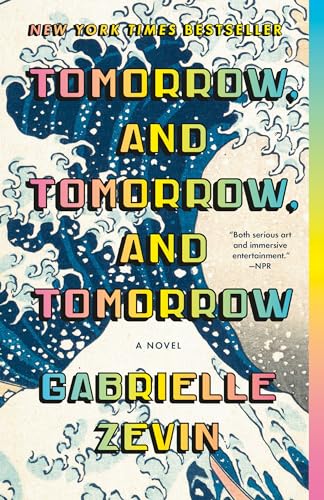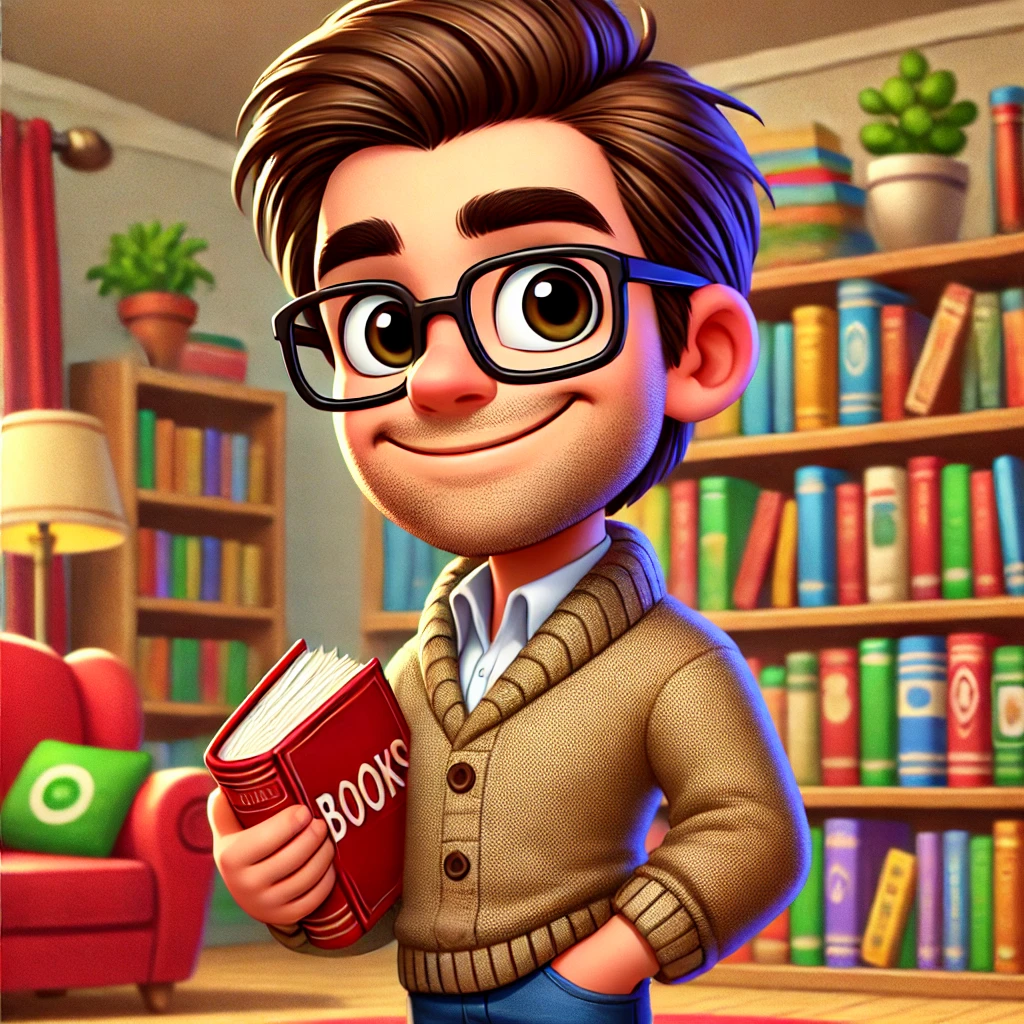Gather ’round, book lovers, because we’re about to tackle the intriguing, game-filled world of Tomorrow, and Tomorrow, and Tomorrow. In this review, I’ll take you through the magical blend of character development, friendships, and ambitious dreams, sprinkled with gaming nostalgia and cultural nods. I promise to keep it real with the highs and the hiccups, so buckle up for a fun and honest review that won’t skimp on the laughs. Let’s go!
In a nutshell
‘Tomorrow, and Tomorrow, and Tomorrow’ by Gabrielle Zevin is a captivating literary fiction novel that follows the lives of two friends who come together over their love for video games. The author skillfully blends themes of friendship, ambition, and creativity, weaving them into a narrative that explores the complexities of human relationships.
Set in the vibrant world of gaming, the story spans several years, capturing the ups and downs of the characters’ personal and professional lives. As the friends navigate the challenges of creating their dream video game, the novel explores deep themes such as the pursuit of passion, the power of collaboration, and the struggle to balance personal dynamics with professional goals.
The book gives readers a nostalgic look into the evolution of the gaming industry, while also touching on cultural references that will resonate with anyone who has ever held a controller or tapped away on a keyboard. Zevin’s writing is both heartfelt and insightful, making it an engaging read for both gamers and non-gamers alike.
Character Development and Relationships in ‘Tomorrow, and Tomorrow, and Tomorrow’
Character development in ‘Tomorrow, and Tomorrow, and Tomorrow’ is sharper than a chef’s knife at an all-you-can-eat buffet. I remember sitting on my couch, cup of tea in hand, as the story unfolded like a vivid mural. Sam, Sadie, and Marx are the game players among people, finding themselves entangled in a web of aspirations, conflicts, and nostalgia. The way these characters evolve is nothing short of incredible. By the end of the book, I felt I’d gone on a university course on how to shape well-rounded characters.
The portrayal of friendships and rivalries in this book is love-hate genius. Sam and Sadie’s friendship is akin to a rollercoaster ride that I once regretted eating a burrito before. It has its ups, downs, and those twisty moments that make you question your life choices. Their camaraderie is punctuated with moments of tenderness, akin to the time I caught my cat snuggled with the dog. But wait, it’s not all rainbows and unicorns. There are raw, gut-punching moments of conflict and misunderstanding that had me yelling at the pages as if they could hear me.
Marx, the third musketeer, adds another layer of complexity. His presence becomes the glue holding the trio together, and watching him grow throughout the book is akin to witnessing a caterpillar transform into a butterfly, but with less fluff and more depth. The author crafts characters that feel genuine and relatable, like someone I might chat with at a coffee shop and then spill the beans about my life.
Next up, prepare to get your game on as we explore gaming and cultural references in the book. It’s going to be like putting cheat codes into reality!
Gaming and Cultural References in ‘Tomorrow, and Tomorrow, and Tomorrow’
Let me tell you, reading ‘Tomorrow, and Tomorrow, and Tomorrow’ was like opening a magical portal back to my first gaming console days. This book felt like a celebration of everything we love about video games and their impact on culture. The story revolves around two friends who create a video game that takes the world by storm, much like my obsession with Mario Kart back in the day. I still blame Princess Peach for making me lose friendships.
What I loved most was the way this book embraces gaming nostalgia. The characters in the book talk about classic games that made us who we are today. They reference games like ‘Pac-Man’, ‘Super Mario Bros’, and ‘Zelda’. Each mention made me think, “Oh man, I remember the first time I beat that level!” The book gives a nod to gamers everywhere and lets us know we’re in on a secret club.
At the same time, the book also dives into the wider cultural impact of video games. It explores how gaming and tech have shifted pop culture, very much like that one time when my grandma could suddenly beat me at Candy Crush. Gaming isn’t just a pastime; it’s a cultural phenomenon that brings people together, and the book captures that brilliantly.
Now, to keep you on the edge of your bean bag chair, tune in next for a juicy tidbit. We’re about to explore the themes of friendship and ambition in this captivating tale!
Themes of Friendship and Ambition in ‘Tomorrow, and Tomorrow, and Tomorrow’
Friendship in ‘Tomorrow, and Tomorrow, and Tomorrow’ takes center stage like a rockstar at a concert. The bond between the characters, Sam and Sadie, is both inspiring and frustrating. It’s like my relationship with pizza—unhealthy at times, but utterly satisfying. Gamers will appreciate the authentic portrayal of online camaraderie, reminding us of the friendships forged in the chaos of a digital battlefield. The book does a spectacular job capturing those nuances. You know, like when your friend revives you in a game, and your heart skips a beat because you owe them a pizza now.
On ambition, this book pulls no punches. The way the characters hustle is both relatable and stressful—in a good way, of course! Their drive to create the next hit video game feels personal. It’s almost as if the author crawled inside my head when I used to cram all night before a big release (of a video game, obviously—not an essay, that would be too responsible for college me).
But, there are moments when ambition gets the best of them, leading to conflicts and misunderstandings. We’ve all been there, right? Plunging headfirst into something without knowing if we’re swimming with sharks or dolphins.
Friendship and ambition sometimes clash, showing that life isn’t all about cheat codes and easy levels. Each chase after ‘tomorrow’ showcases how the characters balance these themes without losing sight of who they are.
Hold onto your controllers, because next up is the narrative structure and pacing, where we race through twists quicker than a speedrunner on caffeine!
Narrative Structure and Pacing in ‘Tomorrow, and Tomorrow, and Tomorrow’
‘Tomorrow, and Tomorrow, and Tomorrow’ by Gabrielle Zevin plays with a unique narrative structure that keeps the reader both engaged and slightly confused at times, like trying to assemble IKEA furniture without instructions. The story jumps back and forth in time, giving readers a patchwork quilt of the characters’ lives. While this method offers deep insights into their pasts and how they got there, it might leave some readers searching for the missing screws and wondering if they’ve accidentally built a bookshelf instead of a chair.
Pacing also has its quirks in this book. Some parts zip by like a greyhound on a racetrack. Other sections drag longer than your last Zoom call that could have been an email. The middle of the book sometimes feels like it’s on a leisurely Sunday stroll, which might test the patience of speed-readers. But let’s be honest, who doesn’t love a good wander?
The weaving of gaming elements into the narrative structure is like an Easter egg hunt for game enthusiasts. Zevin keeps the theme consistent without turning the book into a full-blown strategy guide. The subtle references scatter throughout the pages, rewarding gamers with a sense of nostalgia.
Overall, do I recommend ‘Tomorrow, and Tomorrow, and Tomorrow’? You bet your controller I do! Just be ready for a bit of a time-travel puzzle, and maybe keep some snacks handy for the slower bits.
Conclusion
‘Tomorrow, and Tomorrow, and Tomorrow’ by Gabrielle Zevin offers a nostalgic trip through gaming, with characters you’ll root for and some you’ll want to shake. The book’s clever narrative and pop culture nods make it a page-turner, though the pacing sometimes felt like waiting for a game to load back in the 90s. Despite this, the story of friendship and ambition struck a chord with me. I recommend it for anyone who loves a good game and a better story. If you treasure deep connections and quirky humor, this one’s for you. This concludes my review. Game on!


